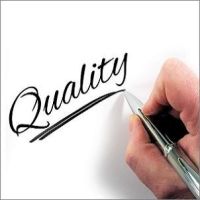Public hospitals like Harbor-UCLA have adapted Toyota's production system to healthcare and are changing their longstanding practices of storing equipment, scheduling surgeries and discharging patients accordingly. The lean management philosophy is being implemented to deal with inefficiency and to improve quality.
Under this adapted model, the OR staff have reorganised closets and have assigned everything a specific location and easy-to-read labels. This helps nurses and doctors find what they need quickly and efficiently enabling the OR team to mobilise faster.
"It saves time because they don't go looking for things - they know where they are," said Dawna Willsey, a clinical director at the hospital.
Private hospitals in Seattle and Wisconsin implemented Toyota's lean management system a decade or more ago. But this idea is still fairly new for hospitals that serve large numbers of poor people.
Medical professionals in California and elsewhere have expressed scepticism that a process traditionally used to build cars can be applied to healthcare. Some are also put off by the use of Japanese vocabulary such as muda (waste) and jidoka (automation with a human touch). Others are doubtful whether the application of this philosophy will be sustainable.
As DeAnn McEwen, a health and safety specialist with National Nurses United points out, lean management reduces nursing to a series of standardised tasks and treats them like robots who are applying nuts and bolts to identical patients. In reality, she points out, patients are not widgets and nurses are not robots. Nursing care should not be treated like a commodity because it is essentially a service that requires critical thinking and the application of judgment.
However, experiences from other hospitals and research from around the country indicates that using Toyota's techniques could improve quality and safety for patients. Changes inspired by Toyota's system have had direct, positive results and have reduced the time patients spend at the hospital as well as medication errors. They have also saved money and have reduced surgery cancellations.
When Harbor-UCLA implemented this system, they overhauled the outpatient eye clinic. Tracie Bell, a nursing attendant reports that before the new system, it was total chaos with piles and piles of paper. But under the new colour-coded system, things have become a whole lot easier. The number of new patients seen each day has nearly doubled within several months and the time patients spend at the clinic has dropped from 4 and a half hours to just over two. Surgeries are also being scheduled more quickly.
Source: MedCity News
Image Credit: Wikimedia Commons


























